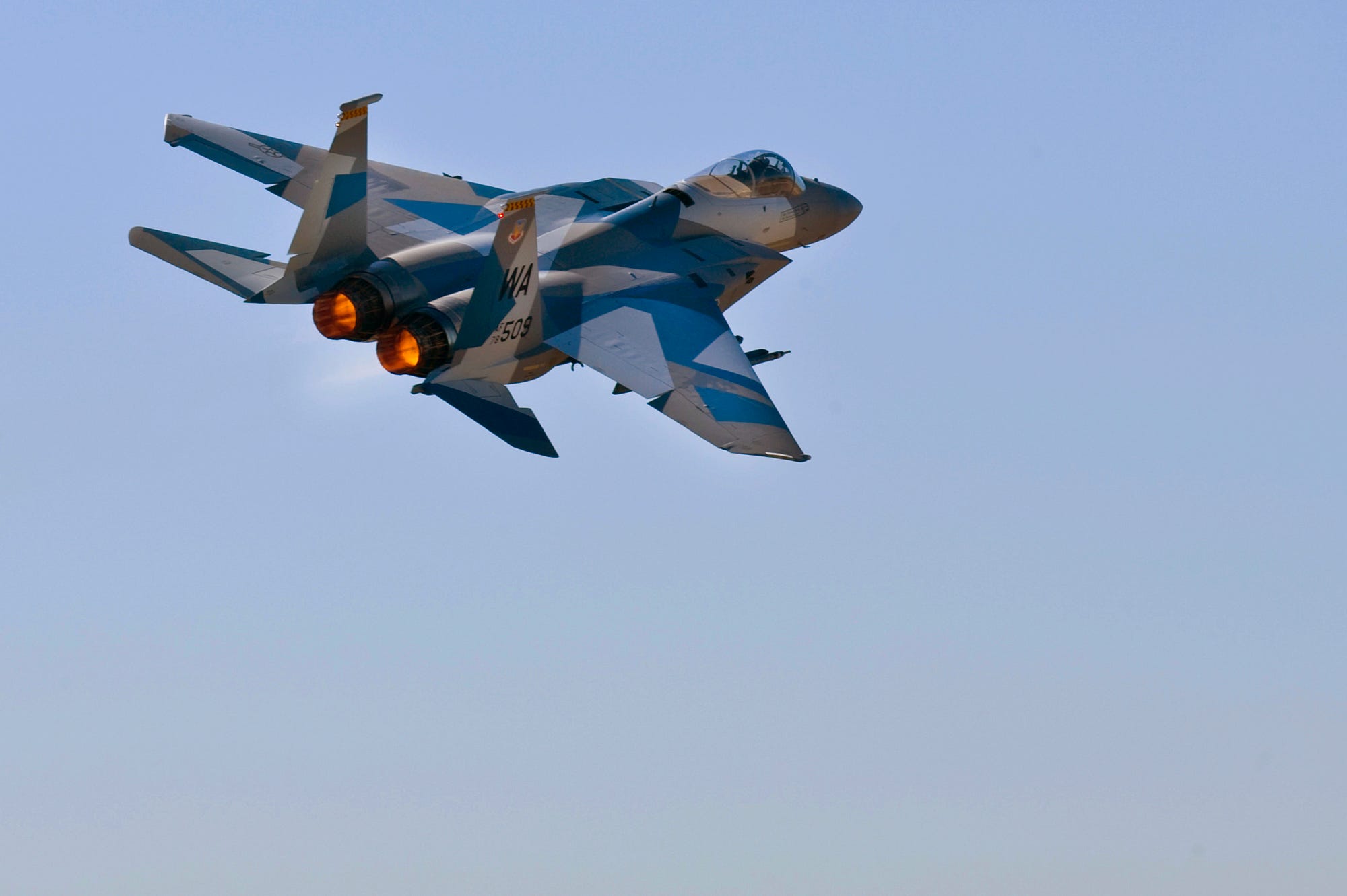by DAVID AXE
Marines expand aggressors as Air Force cuts them
The U.S. Air Force fancies itself America’s main practitioner of air dominance—that is, engaging enemy warplanes and achieving air superiority over the battlefield.
But in some ways, the Navy and Marine Corps actually take aerial warfare more seriously than the Air Force does. Case in point, the Marines are expanding their ability to train for close-in air-to-air dogfighting while the Air Force is cutting back.
Until recently, the Air Force maintained three “aggressor” squadrons—units of highly-experienced pilots flying F-15 and F-16 fighters to simulate enemy warplanes during training exercises.
The 64th and 65th Aggressor Squadrons at Nellis Air Force Base in Nevada devoted much of their time to playing the bad guys during the flying branch’s main Red Flag war games. The 18th Aggressor Squadron at Eielson Air Force Base in Alaska performs a similar role for Red Flag Alaska.
With just three aggressor units helping to train 59 USAF combat squadrons, there was a strong argument to be made that the Air Force should expand its aggressor force, especially with the Pentagon’s continuing shift away from low-intensity counterinsurgency operations and back toward high-tech warfare.
Instead, in 2014 the Air Force disbanded the 65th Aggressor Squadron and gave most of its F-15s to Air National Guard units. The 64th—mainly an F-16 squadron—gets to keep a few of the F-15s until March 2015, after which point the Air Force will have just the 64th and the 18th and their roughly 40 F-16s to simulate enemy planes.
 Above—a 65th Aggressor Squadron F-15. Air Force photo. At top—U.S. Navy F-5s. Navy photo
Above—a 65th Aggressor Squadron F-15. Air Force photo. At top—U.S. Navy F-5s. Navy photo
The aggressor cut was a cost-saving measure. “Fiscal times are tough for the country as a whole, and when you find yourself in that situation you have to make sacrifices and you have to look closely at priorities and make tough decisions,” explained Capt. Jeremy Allen from the 65th.
But in fact, the 65th cost just $35 million a year, less than a quarter of the price of a single new F-35 stealth fighter.
And bear in mind that the Navy and Marines exist in the same “fiscal times” and yet have maintained or even enlarged their own aggressor squadrons.
The Navy has four aggressor units flying F-16s, F/A-18s and F-5s in Florida, Virginia and Nevada. Marine Fighter Training Squadron 401 in Yuma, Arizona operates a dozen F-5s, part of a 44-plane batch that the Pentagon bought used from Switzerland starting in 2003.
And the Corps wants to acquire more of the nimble, twin-engine fighters, which can pull nine Gs in close-in mock combat. “Based on the low cost per flight hour and ease of maintenance of the F-5, plans to expand the adversary capacity and capability while improving accessibility are being developed,” the Marines stated in their annual aviation report for 2015.
The plans would nearly triple VMFT-401’s strength to 32 planes in four detachments—one each in Arizona, California, North Carolina and South Carolina. Not coincidentally, the Swiss still possess a few dozen lightly-used F-5s and plan to retire them—and likely make them available for sale—in the next couple years.
The Marines cited three main reasons for wanting more aggressors—the addition of more air-to-air duties to F/A-18 and AV-8 squadrons and the Corps’ accelerating acquisition of F-35 stealth fighters.
To make sure the F-5s can put up a useful fight against F-35s, the Marines want to upgrade the 1970s-vintage aggressors with better sensors and radar jammers.
And with the Air Force cutting back its own aggressors, it’s possible the Marines could find themselves—out of necessity—also playing bad guys to the flying branch’s fighter squadrons. VFMT-401 recently deployed to Vermont to fly against F-16s from that state’s Air National Guard.
It’s remarkable that the Air Force needs the Marine Corps’ help doing what the Air Force claims to do best.
No comments:
Post a Comment